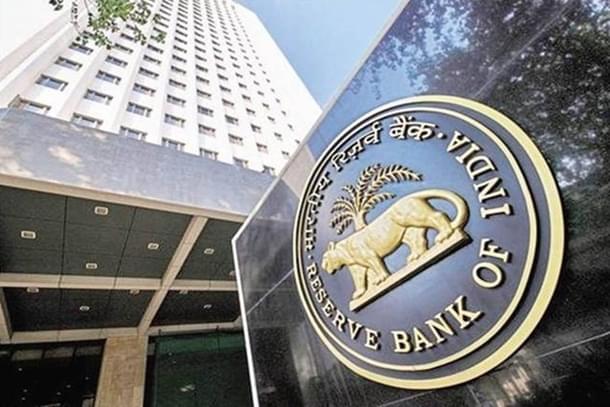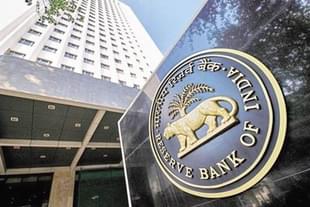Business
Why Does The Credit Growth Have RBI Worried
Business Briefs
Jul 18, 2023, 10:34 AM | Updated 11:01 AM IST
Save & read from anywhere!
Bookmark stories for easy access on any device or the Swarajya app.


Credit card debt in India recently crossed the Rs 2 lakh crore mark. Over the past year, India has seen strong growth in non-food credit, with strong credit growth continuing in the first quarter of financial year 2024 (FY24).
Currently, credit is growing at 15 to 16 per cent year-on-year, despite the hikes in interest rates. However, the Reserve Bank of India is reported to be cautious about the strong credit growth.
A significant portion of growth has been driven by double digit growth in retail loans, while loan demand from companies has relatively slower.
Why are Retail Loans Growing?
Retail loans, which are loans extended to individuals, make up 30 per cent of the bank loan book also account for the largest share of bank credit. Until a few years ago, credit to companies had the largest share of bank credit.
However, with a decline in corporate asset quality in the 2016-2018 period, banks have begun focusing on consumer loans which have shown much better performance. Retail loans can be both unsecured and secured, with secured loans accounting for nearly 60 per cent of all retail loans.
However, unsecured loans have been growing much faster than secured loans, with unsecured loans accounting for 21 per cent of retail loans eight years ago versus 30 per cent today. In addition, unsecured loans are usually borrowed for consumption-oriented spending, rather than for traditional expenditures like houses or vehicles.
The rise in credit card usage is a sign of a cultural shift in a country where the population has generally been averse to borrowing money. Traditionally, borrowings have been used to finance house purchases and vehicle purchases, while now, Indians are shifting to financing consumption with loans.
Credit Cards are Helping Drive Retail Lending Growth
Credit card growth is not limited to tier-1 cities. According to SBI Cards’ investor presentations, tier-1 cities made up 52 per cent of all active credit cards in June 2020, the figure fell to 38 per cent by 2023, indicating that the growth was primarily driven by areas beyond tier-1.
The overall numbers of credit cards issued have also grown from 73 million to 85 million between March 2022 and March 2023 – despite 12 million inactive cards being blocked, according to SBI Card’s recent conference call.
Among loan against property, auto loans, vehicle loans, personal loans, and other types of loans, credit card has shown strong growth in recent quarters. While credit card companies cater to “prime” or low credit risk audiences, companies have also started developing cards and products for “sub-prime” borrowers like students, freshers, and low-income individuals who might not be given cards by established players.
Why is the RBI Worried?
The growth of unsecured credit has spooked the RBI, since unsecured loans by definition are riskier. As highlighted earlier, the unsecured portion of the banks’ book has been growing at a rapid pace, and now makes up nearly 33 per cent of the retail book.
In addition, in the search for credit growth some players might resort to lending to riskier profiles, which could increase the system’s fragility. The percentages of vintage delinquencies (loans that have repayments outstanding for more than 30 days in six months of origination) are currently higher than the pre-pandemic period, implying that a larger proportion of the borrowed money is not being paid back.
Reports suggest that the RBI might be looking to revise risk weights for these loans upwards, in order to deter banks from making riskier loans. Nevertheless, the high margins in the business might still attract banks, since unsecured loans earn a much higher interest rate than secured loans.
Personal loans have not seen a similar increase in interest rates, as other categories home loans have, despite the borrowing rates for banks increasing. This implies that banks have high margins in the unsecured business, and they would be okay with slightly lower margins on the unsecured side, since the overall margins would still be high.
On the flipside, India still has lower household debt than other markets and so far credit quality has been quite high. In addition, the share of customers who are revolvers (people who keep rolling over their balance rather than paying down debt at one go) is going down, implying that most customers make payments and don’t carry forward credit.
While such behavior is a negative for credit card issuers, since revolvers are the ones who make a bulk of interest payments, it shows that the quality of credit card users is quite decent. The portion of revolvers for SBI Cards has come down from 28 per cent two years ago, to 24 per cent today, while the portion of users making full payments or EMI payments has increased.
Overall, India’s retail credit growth appears to be backed by strong fundamentals, however, as history has shown, banks can often go overboard with lending. Hence, an RBI intervention might help balance the ecosystem better.





